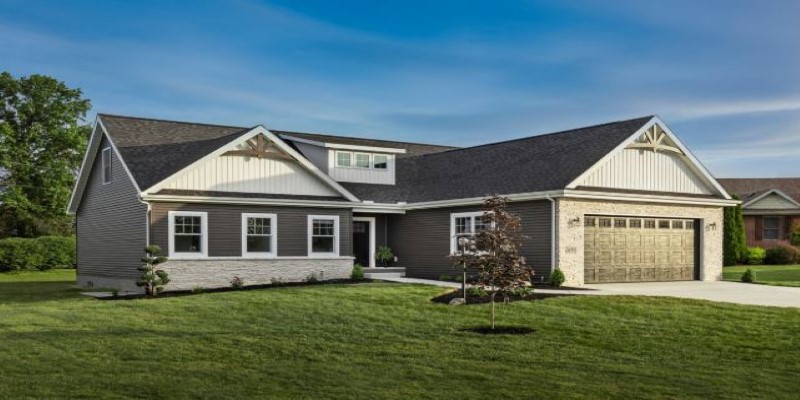Not every house is built the same way. Some go up brick by brick over months. Others are created in sections inside a factory, then transported and assembled on-site. These are called modular homes. While they look like traditional houses once they’re finished, the process behind them is different.
With housing costs rising and construction delays common, modular homes are getting more attention. They offer quicker timelines and can be more affordable than conventional options. For many, the appeal lies in their practical mix of speed, quality, and cost. So what makes them work—and are they a smart choice?
How Modular Homes Are Built?
Modular homes start their life inside a factory, not on a plot of land. Each part—called a module—is built with everything already in place: floors, walls, electrical wiring, and plumbing. These modules are then transported to the home site and lifted into position by crane, where they’re joined together on a permanent foundation.
Building indoors means there are no weather delays, and since several modules can be built at once, the whole process moves faster. What might take nearly a year with traditional construction can often be done in just a few months.
Unlike manufactured homes, modular homes aren’t built on a steel chassis and aren’t designed to move. Once they’re set, they stay put. They’re treated like any other home when it comes to building codes, inspections, and property value. Even though much of the work happens in a factory, local inspectors still review the final setup to make sure everything meets standards.
Cost and Financing
Modular homes are often more affordable than site-built homes, but the pricing depends on size, materials, and location. Basic models might cost $100 to $150 per square foot, but more complex designs can go higher. The total cost will also include land, site preparation, delivery, and final assembly.

Because construction waste is minimized and labor is streamlined, modular homes typically come with fewer cost overruns. Building indoors also means fewer unexpected issues. This level of predictability is appealing to homebuyers on a tight budget or looking to avoid common delays.
Financing is similar to buying a conventional home. Lenders treat modular homes as real property, so buyers can use traditional mortgage options like FHA, VA, or conventional loans. Home insurance works the same way, too. Appraisers compare modular homes to other stick-built houses in the area, not to mobile or manufactured homes.
In many cases, modular homes appreciate value in line with other homes in the neighborhood. They can also qualify for tax deductions, just like a typical residential property.
Design Flexibility and Customization
Today’s modular homes come with a surprising amount of design flexibility. While early models had a more uniform look, modern ones are available in a wide range of styles—from ranch and colonial to modern and multi-story layouts. Buyers can select from a catalog of floor plans or customize one to fit their needs.
Interior choices, such as countertops, cabinets, flooring, and lighting, can all be selected just like in traditional homebuilding. Exterior features such as siding, rooflines, and porches are also flexible. Some modular homes are designed to blend in seamlessly with existing neighborhoods.
One benefit of this process is the ability to include modern upgrades more easily. Many modular homes come equipped with energy-efficient windows, better insulation, and even solar panel readiness. Smart thermostats, efficient HVAC systems, and other modern features are more straightforward to install in a factory than in the field.
Because modular builders often standardize their processes, upgrades are usually more affordable compared to one-off custom builds on-site. This means buyers get more for their money without sacrificing the look or functionality of the home.
Long-Term Value and Considerations
Once placed on a foundation, a modular home performs just like a traditionally built house. It meets all state and local codes and must pass inspection. Materials used are often the same—or sometimes better—than those used in on-site construction.

Modular homes can last as long as site-built ones if they are properly maintained. Resale value is comparable, too, especially when the home is in a well-maintained area. Since they're treated as real estate and not personal property, they qualify for the same types of loans, tax rules, and insurance policies.
That said, buyers should be aware of a few considerations. The land must be prepped before the home arrives, which includes grading, foundation work, and utility hookups. This prep can take time and may require coordination between different contractors. Delivery of the modules also depends on access roads and weather conditions.
Not every location allows modular construction. Zoning laws, homeowners associations, or outdated ordinances may restrict or limit these homes. It’s always best to confirm what’s allowed on a specific piece of land before making a purchase.
Customer service after the sale may vary by builder, so it’s important to read reviews and understand warranty terms. While most modular homes come with structural warranties, coverage details can differ depending on the manufacturer.
Still, for many buyers, the shorter build time and cost control make modular homes a more manageable path to ownership. They can be especially useful in areas with skilled labor shortages or housing demand that outpaces construction.
Conclusion
Understanding what is a modular home gives a clearer picture of how homebuilding is changing. These homes are built in sections, delivered, and assembled quickly—without cutting corners on quality. They look and function like any other house once completed. The appeal comes from their cost efficiency, flexible design options, and faster move-in time. While there are some site prep and zoning details to work through, the overall experience can be more predictable and less stressful. For buyers who want a real house without the usual headaches of construction, modular homes offer a path that blends structure with convenience.












